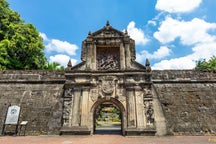Naga Metropolitan Cathedral

The cathedral is renowned for its striking interiors, which feature intricate frescoes, trompe-l’œil artwork, and stunning stained glass windows. Visitors can also explore its historical surroundings, including the Holy Rosary Minor Seminary and the Porta Mariae, a landmark celebrating the devotion to Our Lady of Peñafrancia. The cathedral is not only a place of worship but also a center of community life in Naga, linking the faithful with local religious institutions and events such as the Penafrancia Festival.
Best Time to Visit
The best time to visit the Naga Metropolitan Cathedral is during the Penafrancia Festival, which takes place in September. This vibrant religious and cultural event attracts thousands of pilgrims and tourists, making it an excellent time to experience the cathedral's spiritual and cultural significance.









